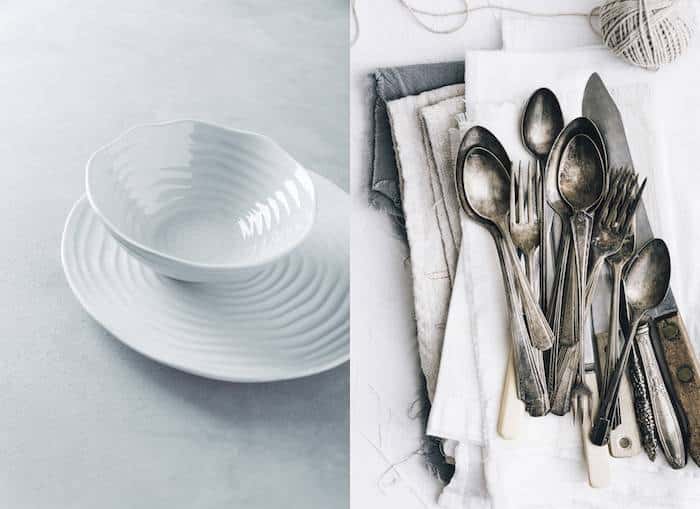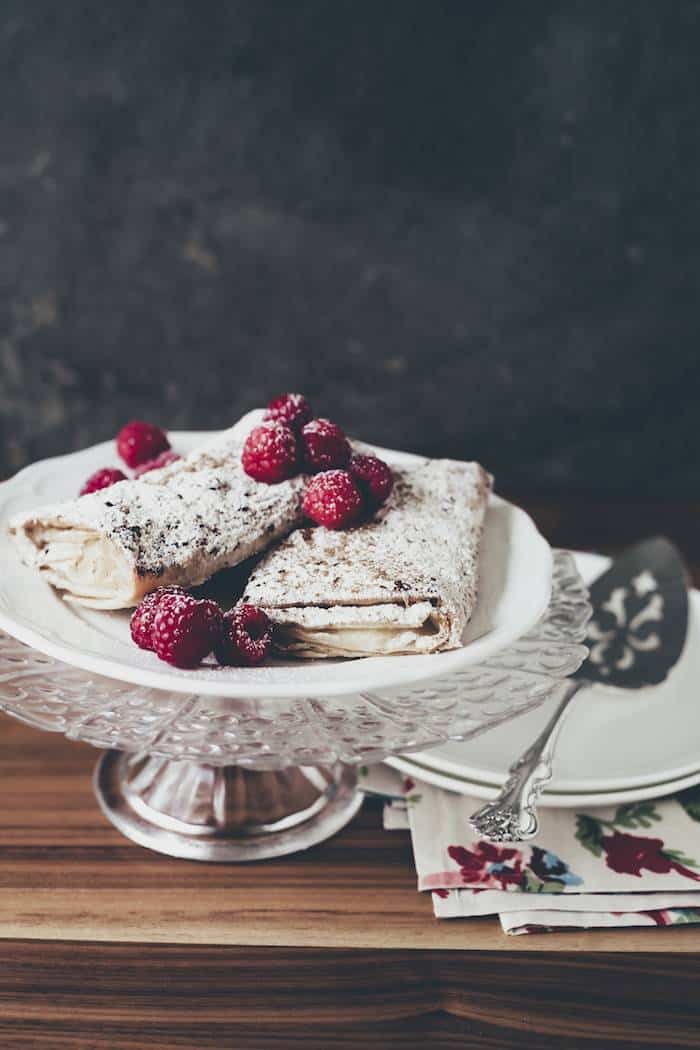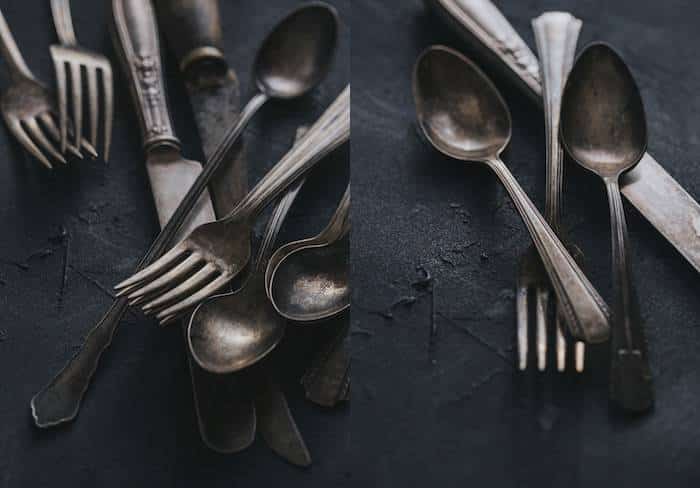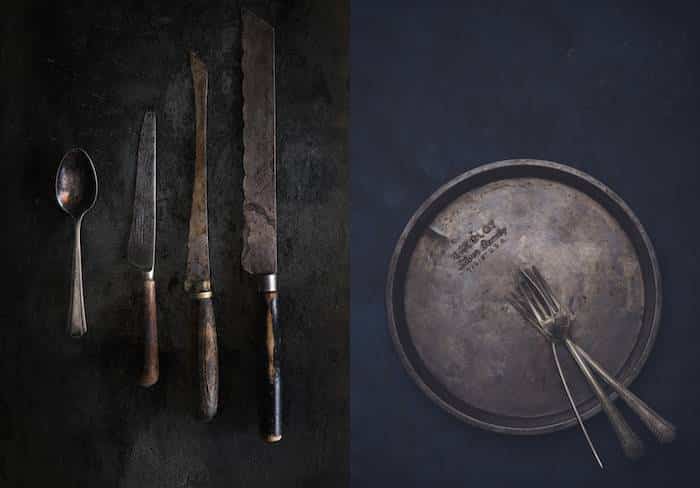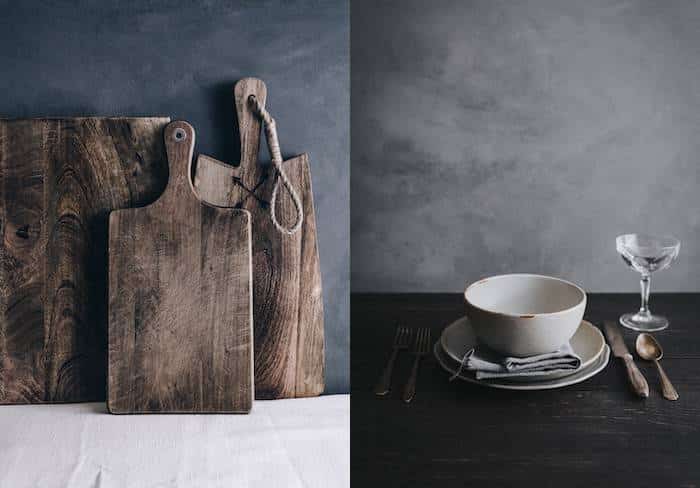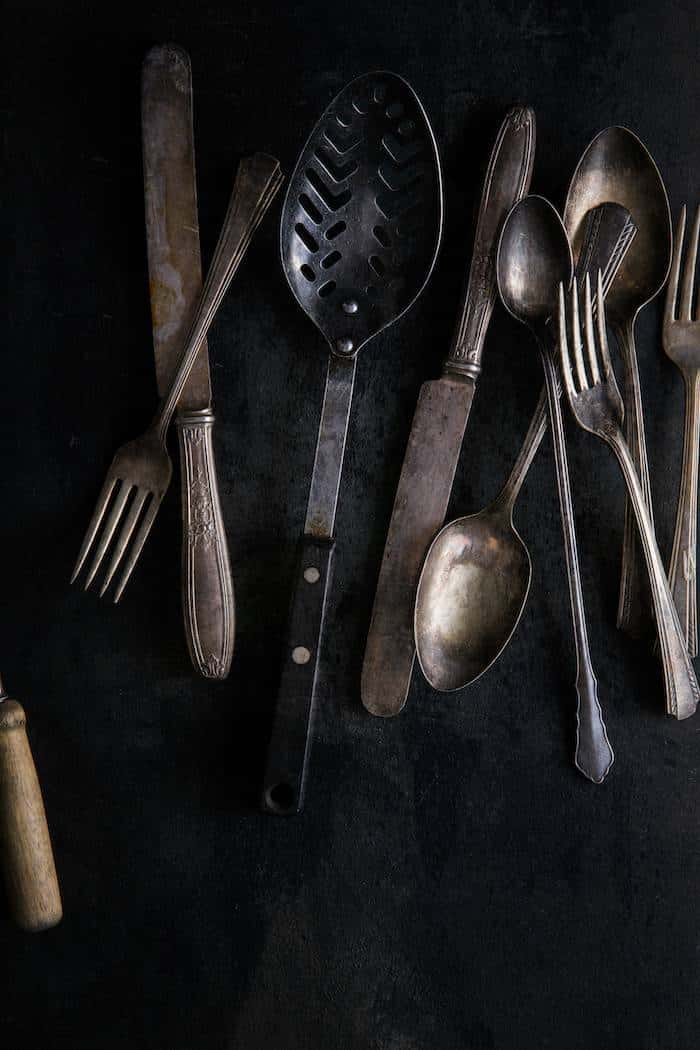
As a food photographer, I have amassed a huge collection of props over the years. Whether your style is minimalist or not, most of the time you need some props to tell your visual story. The props you use should make sense and be cohesive within the context of your image. They are placed in your scene in service of the story you are trying to tell and should not dominate the scene or distract your viewer from the subject—the food.
Different jobs will require different levels of propping. On big budget shoots, you may have a food stylist and a prop stylist. On other shoots, your food stylist may also do the propping. In my case, I almost always do the propping myself, and it is a part of the job that I really enjoy
There are two ways to approach propping in food photography.
The most common scenario is that a professional food photographer will have tons of props at their disposal, so that they are more likely to have the exact item they’ll need. Established photographers with studios usually have shelves and shelves of props, linens, and other items to choose from.
That being said, when you are working with a lot of clients on different types of shoots, you’d be surprised at how often you’ll run out to source a certain type of prop you don’t have in your huge collection. Prop shopping is a continuous part of my business, even though I have many props that I never use. When I first get a job, I plan the props; if I don’t have exactly what I’m looking for, I will shop for it.
The other scenario is having a smaller collection of carefully curated props. I have found that this is not the best option for me. Shooting for a variety of clients means that I need to rotate my props, so the same items don’t show up over and over again in my photographs. However, if you’re a blogger or shoot stock photography, this is an approach that can make a lot of sense for you. It can help you be more intentional with your photography and help you focus on your composition. In addition, it can save you a lot of space!
When selecting props, really think about your style and what types of props would enhance it. My style is on the rustic side, so I tend to use a lot of vintage and antique props and heavier pieces of ceramic or pottery, like stoneware. If your style is really clean and elegant, or more refined, such props would not make much sense and you’d be better off with more delicate pieces.
Here are some more guidelines about selecting your props;
- one of the most crucial thing to remember is to generally stay away from very bright colours and bold patterns, as they will distract from the food. Sometimes colourful pieces add a point of interest, but they need to work with the overall composition and feel of the photo. Sometimes I will layer a more colourful or patterned plate under a white or black one.
- use small props; even regular sized dinner plates will look huge to the camera and dominate the image. Scale and size is a very important aspect of composition. I usually use salad plates and smaller bowls etc. in my photography
- don’t use a lot of props. Too many props will distract the viewer and dominate the image. You want the focus to be on the food.
- watch for glare. Shiny utensils and dishes will reflect the light in a way that can be very distracting. This is one reason why I love the patina of vintage cutlery.
- get creative with props by using them differently than their intended use. For example, I have seen votive candles make cute dessert cups, or shot glasses work for little starters like layered savoury terrines
When selecting your props, start with one or two pieces. Perhaps a neutral salad plate and a vintage knife or spoon. If in doubt, keep it simple. White is always a good option. Because my food photography tends to be on the dark side, I usually use darker toned dishes in black, blue and brown, with a matte finish to reduce the amount of reflection produced by the light. White dishes in a dark scene also draw the eye away from the subject unless they are balanced out by other elements in the frame.
Where to buy props:
One of my first stops for propping shop is The Salvation Army and other charity shops. They can be hit or miss sometimes, but I have found a lot of gems over time. There are a couple of stores I frequent in my area that have a large selection of housewares, where I always find props at great prices no matter when I go.
Etsy and eBay are great places to shop for vintage props. I am partial to Ovenex brand vintage bakeware, and have also been scouring the sites for the perfect antique French cutting board in my ideal shape and size. Pewter plates are wonderful to find, as is vintage enamelware and tarnished silverware.
For some search terms you can use to help you find those props coveted by food photographers and bloggers, head over to Gourmande in the Kitchen for a guest post by Naomi Robertson on how she shops for props for her blog Baker’s Royale.
When I’m looking for new props or props I have not been able to find in the secondhand shops, I source from the following stores in-person:
For online purchases I look at:
Are there any sources you prefer for your prop shopping? Feel free to share and I’ll add them to my list.
Look for my upcoming post on purchasing and making your backgrounds and surfaces.
0

